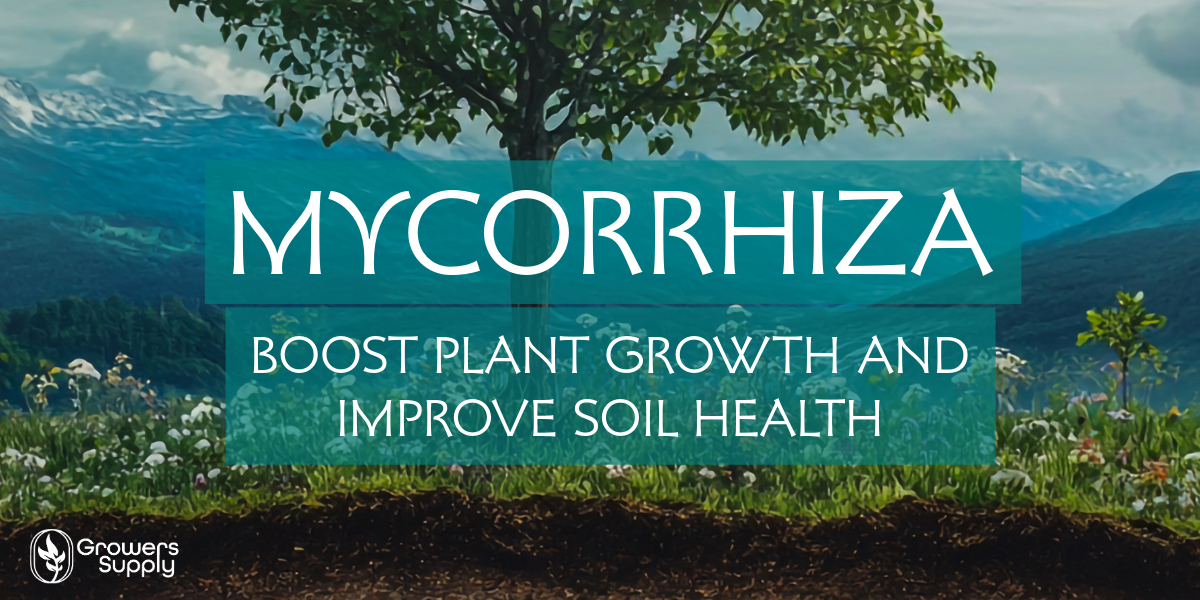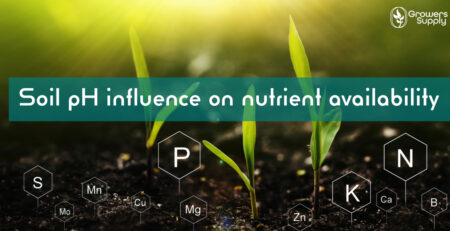
How Mycorrhizal Fungi Boost Plant Growth and Improve Soil Health
Growers2025-02-19T16:17:26+01:00When we think about plant growth, we often focus on the visible elements—sunlight, water, and soil quality. But beneath the surface, an ancient and fascinating partnership is at work, one that has shaped ecosystems for millions of years: mycorrhiza. Whether you’re a seasoned cultivator, an agricultural professional, or a passionate gardening enthusiast, understanding mycorrhizal fungi can revolutionize the way you grow plants.
What is Mycorrhiza?
specialized fungi. These fungi form an extensive underground network that connects with plant roots, effectively expanding their reach beyond what roots alone could achieve. This relationship is mutually beneficial—plants provide fungi with carbohydrates derived from photosynthesis, while the fungi assist in nutrient and water absorption.
There are two main types of mycorrhiza:
Ectomycorrhiza – These fungi wrap around plant roots but do not penetrate the root cells. They are commonly found in association with trees like pines, oaks, and birches.
Endomycorrhiza (Arbuscular Mycorrhiza, AMF) – These fungi penetrate the root cells, forming intricate structures that enhance nutrient exchange. They are widely associated with agricultural crops, vegetables, and many other plant species.
Why is Mycorrhiza Important?
The benefits of mycorrhizal fungi are profound and impact both natural and cultivated environments:
1. Enhanced Nutrient Uptake
One of the most critical advantages of mycorrhiza is its ability to access nutrients beyond the plant’s direct reach. Mycorrhizal fungi extend microscopic filaments (hyphae) into the soil, significantly increasing the root surface area. This allows plants to absorb essential nutrients like phosphorus, nitrogen, and micronutrients more efficiently, reducing the need for chemical fertilizers.
Additionally, mycorrhizal fungi can help improve soil fertility by breaking down organic matter into bioavailable nutrients, enriching the surrounding environment for better plant health.
2. Improved Water Absorption
In drought-prone areas, mycorrhiza can be a game-changer. The fungal network helps plants access deeper water sources, improving drought resistance and reducing the need for frequent irrigation. This is particularly valuable for sustainable agriculture and water conservation efforts.
Moreover, plants colonized by mycorrhizal fungi often exhibit improved turgor pressure, allowing them to remain hydrated longer under stressful conditions.
3. Soil Health and Structure
Mycorrhizal networks contribute to soil aggregation by producing a glue-like substance called glomalin, which binds soil particles together. This enhances soil structure, improves aeration, and reduces erosion, creating an ideal environment for plant roots to thrive.
Healthy soils with a thriving mycorrhizal network also promote the growth of beneficial microorganisms, fostering a more balanced ecosystem underground.
4. Natural Disease Resistance
By forming a protective barrier around plant roots, mycorrhizal fungi help prevent root pathogens from taking hold. Additionally, they can stimulate the plant’s natural defense mechanisms, making them more resilient against diseases and environmental stressors.
Some studies suggest that mycorrhizal fungi can even play a role in reducing pest infestations by triggering the plant’s production of defensive compounds.
5. Greater Biodiversity and Ecosystem Stability
In natural ecosystems, mycorrhizal fungi act as a critical component of plant communities, connecting different plants and facilitating nutrient exchange. This underground network, often referred to as the “Wood Wide Web,” fosters biodiversity and enhances ecosystem resilience.
Mycorrhizal fungi also contribute to carbon sequestration, helping mitigate climate change by storing carbon in the soil through complex fungal structures.
How to use Mycorrhiza in Your Cultivation Practices
If you want to harness the power of mycorrhiza in your garden, farm, or greenhouse, here are some best practices to consider:
1. Use Mycorrhizal Inoculants
Mycorrhizal fungi can be introduced to soil through commercial inoculants, available in powder, granular, or liquid form. These can be applied directly to seeds, roots, or soil to encourage colonization.
When selecting an inoculant, ensure it contains the appropriate species for the crops or plants you are cultivating. Different plants may require different strains of mycorrhizal fungi.
2. Avoid Overuse of Fertilizers and Pesticides
Excessive chemical fertilizers, particularly high-phosphorus fertilizers, can hinder mycorrhizal development. Similarly, certain fungicides can disrupt these beneficial fungi. Opt for organic or slow-release fertilizers to support a balanced soil ecosystem.
Using compost and natural amendments like biochar can further support fungal activity, ensuring long-term soil health.
3. Reduce Soil Disturbance
Frequent tilling disrupts fungal networks, making it harder for mycorrhiza to establish and thrive. Practicing no-till or low-till farming and gardening can preserve these vital underground connections.
Additionally, cover cropping between growing seasons can help maintain a stable microbial community and prevent soil degradation.
4. Maintain Plant Diversity
Diverse plant species encourage the growth of a variety of mycorrhizal fungi, strengthening overall soil health and resilience. Companion planting and cover cropping can help maintain a thriving microbial community.
Experimenting with polycultures rather than monocultures can maximize the benefits of mycorrhiza and create more sustainable cropping systems.
The Future of Mycorrhizal Applications
With increasing interest in sustainable agriculture and regenerative farming, mycorrhiza is gaining recognition as a powerful tool for improving crop yields, reducing chemical inputs, and mitigating climate change effects. Scientists and agronomists are exploring ways to optimize mycorrhizal applications for large-scale agriculture, making it more accessible for commercial and home growers alike.
Innovations in microbial soil amendments, bioengineering of fungal strains, and integration with precision agriculture could further expand the potential of mycorrhizal fungi in the coming years.
By understanding and embracing mycorrhiza, we can work with nature rather than against it, fostering healthier plants, richer soils, and more resilient ecosystems. Whether you’re growing a backyard vegetable garden or managing a large-scale agricultural operation, integrating mycorrhizal fungi into your practices could be the key to unlocking nature’s full potential.
Our Products for Soil health and support
- Fertilizer, BioTabs
BioTabs | Mycotrex
29,90 € – 279,90 €0 out of 5incl. VAT
plus Shipping Costs
Select options This product has multiple variants. The options may be chosen on the product pageQuick View









Leave a Reply